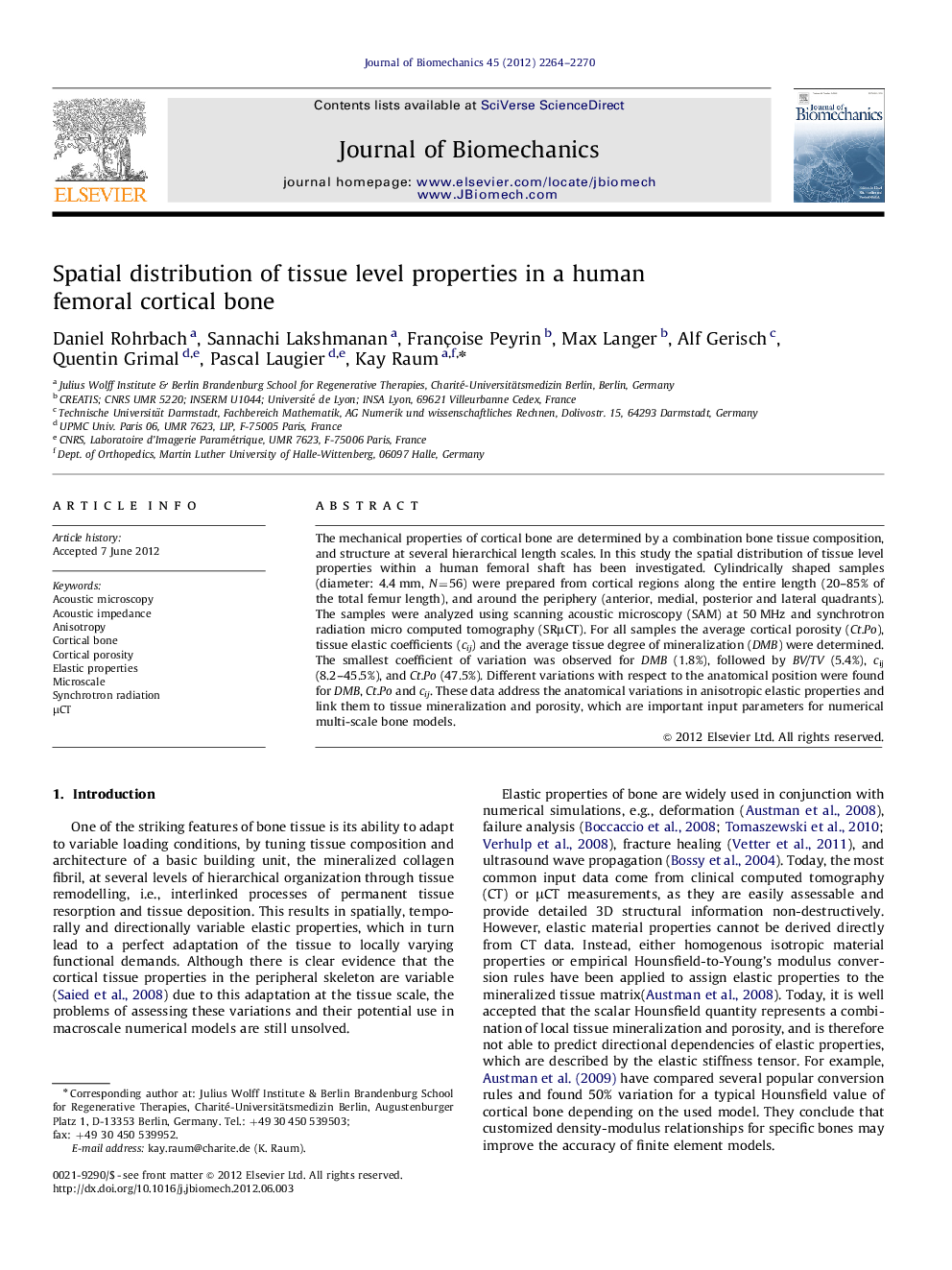| Article ID | Journal | Published Year | Pages | File Type |
|---|---|---|---|---|
| 872556 | Journal of Biomechanics | 2012 | 7 Pages |
The mechanical properties of cortical bone are determined by a combination bone tissue composition, and structure at several hierarchical length scales. In this study the spatial distribution of tissue level properties within a human femoral shaft has been investigated. Cylindrically shaped samples (diameter: 4.4 mm, N=56) were prepared from cortical regions along the entire length (20–85% of the total femur length), and around the periphery (anterior, medial, posterior and lateral quadrants). The samples were analyzed using scanning acoustic microscopy (SAM) at 50 MHz and synchrotron radiation micro computed tomography (SRμCT). For all samples the average cortical porosity (Ct.Po), tissue elastic coefficients (cij) and the average tissue degree of mineralization (DMB) were determined. The smallest coefficient of variation was observed for DMB (1.8%), followed by BV/TV (5.4%), cij (8.2–45.5%), and Ct.Po (47.5%). Different variations with respect to the anatomical position were found for DMB, Ct.Po and cij. These data address the anatomical variations in anisotropic elastic properties and link them to tissue mineralization and porosity, which are important input parameters for numerical multi-scale bone models.
